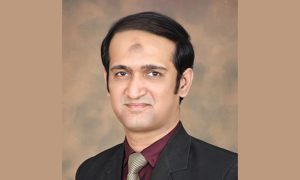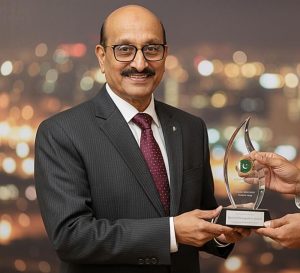Mr. Niaz Shahmir, the Founder and CEO of ANCO Engineering Services, is a seasoned professional with over two decades of experience working with Schneider Electric. His expertise spans low and medium voltage systems, bolstered by specialized training received both in Pakistan and abroad. Under his leadership, ANCO has become a leader in addressing complex challenges, including harmonics in renewable energy systems. Harmonics, often arising from AC/DC conversions, can pose significant risks to equipment longevity. Mr. Shahmir’s company has provided innovative solutions to industries while raising awareness to mitigate these issues and enhance equipment performance.
Beyond his professional endeavours, Mr. Niaz Shahmir leads an active lifestyle and is deeply committed to promoting health and fitness. A regular cyclist and runner, he rides more than three days a week and serves as an organizing member of Critical Mass Karachi and Run Karachi Run, prominent local cycling and running clubs. He is also associated with Slow and Steady, another cycling group. In addition to cycling, he has participated in a half marathon with Special Olympics Pakistan and plans to join the Karachi Marathon this year.
Mr. Shahmir’s passion for the outdoors extends to hiking, annual expeditions, and camping in remote locations via 4×4 vehicles. His dynamic lifestyle reflects his dedication to both personal growth and professional excellence, inspiring a balance between innovation and recreation.
Mr. Niaz Shahmir has shared some very valuable insights about Harmonics which are reproduced here as is.
Harmonics in Electrical Power System: A difficult to apprehend common issue, but not a fatality
Harmonics in electrical systems occur when non-linear loads distort the sinusoidal waveform of the electrical current. To address harmonics in electrical systems, it’s essential to identify the sources of harmonic distortion, assess the severity of the problem and implement appropriate mitigation techniques.
Causes of Harmonics
- Non-linear loads: Electronic devices with non-linear characteristics, such as:
- Switch-mode power supplies (SMPS)
- Rectifiers
- Inverters
- Variable frequency drives (VFDs)
- Computers and other digital equipment
- Switching operations: Frequent switching of non-linear loads creates harmonic distortion.
Characteristic Harmonics - 3rd, 5th, 7th, 9th, 11th harmonics: Typical for 6-pulse converters (e.g rectifiers, inverters)
- 5th, 7th, 11th, 13th harmonics: Typical for 12-pulse converters
Non-Characteristic Harmonics
Non-characteristic harmonics are not typically generated by non-linear loads, such as: - 2nd, 4th, 8th harmonics: Not typically generated by 6-pulse converters
- 2nd, 4th, 6th harmonics: Not typically generated by 12-pulse converters
Causes of Non-Characteristic Harmonics - Unbalanced systems: Unbalanced voltage or current in 3-phase systems
- Saturation of transformers: Magnetic saturation of transformers can generate non-characteristic harmonics
- Non-linearities in equipment: Such as core saturation or winding harmonics
- Power system resonances: Resonances in the power system can amplify non-characteristic harmonics
Effects of Harmonics - Overheating: Harmonics cause excessive heat in equipment, reducing lifespan and efficiency.
- Resonance: Harmonics can create resonance, leading to over-voltages and equipment damage.
- Power quality issues: Harmonics distort the voltage waveform, affecting power quality and equipment performance.
- Increased energy losses: Harmonics lead to increased energy losses in transmission and distribution systems.
Key points to remember:
• Harmonics cause problems when over-passing certain limits.
• Harmonic must be tackled when Low Voltage Variable Speed Drive are present.
• Power Quality monitoring is recommended to early detect any harmonic reappearance.
Mitigation Techniques - Passive filters: Electronic filters to attenuate specific harmonic frequencies.
- Active filters: Power electronic devices that actively mitigate harmonic currents.
- Line conditioners: Devices that regulate voltage and mitigate harmonic distortion.
- Harmonic-reducing transformers: Specially designed transformers to reduce harmonic distortion.






